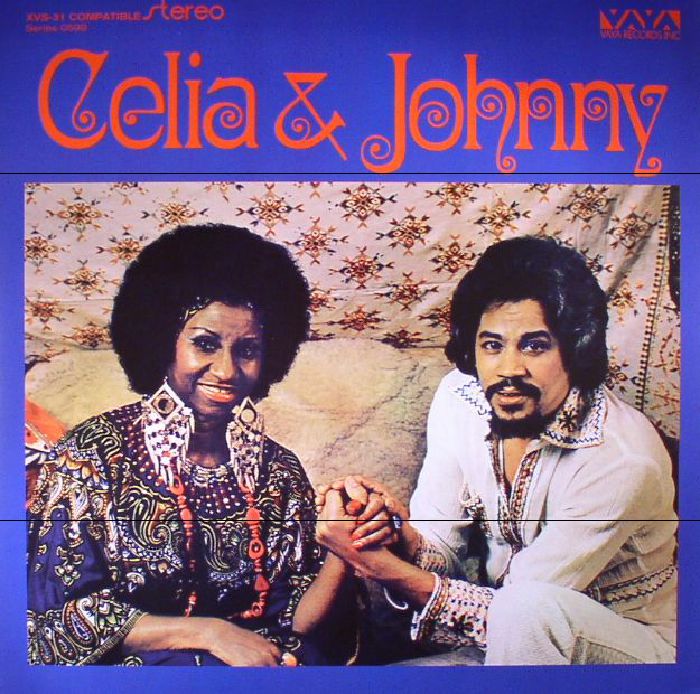

In 2015, it was selected by Billboard magazine as one of the "50 Essential Latin Albums of the Last 50 Years."Ĭelia was a regular guest of honor when La Fania toured the world, with humble upbringings in La Habana, Celia started her music career with La Sonora Matancera then exile to Mexico and then the US where she blossom to become “La Reina de la Salsa” with many hits songs as Quimbara, Burundanga, La vida es un carnaval and La negra tiene tumbao to name a few. In 2014, the Library of Congress named “Celia & Johnny” to the National Recording Registry. In 1974, Johnny Pacheco teamed up with Cuban star Celia Cruz and produced one of the quintessential albums in Latin Music, simply titled “Celia & Johnny.” The album paved the road for singing talents such as Ruben Blades, Adalberto Santiago, Cheo Feliciano, Ismael Miranda, Willie Colon, Pete "El Conde" Rodriguez, Hector Lavoe, and many others. All of them evolved to become the category known today as Salsa. The group comprised music collaborators, singers, producers and personalities who came together to tell the story of their daily struggles in the big city, their stories of migrating to the US, of eternally missing their motherland while also celebrating the many joys of life.īack then this wasn't categorize as "Salsa." It was a fusion of Latin rhythms, Rumba, Mambo, Guaguanco, Sonmontuno, Latin Funk and Jazz, Ballads, Boogaloo, among many others. The group gave many aspiring Latin musicians the opportunity to showcase their talents under the influential hand of Johnny Pacheco. The Fania All-Stars took off in the 1970's in New York City. These creative geniuses reinterpreted rhythms and infused them into myriad styles - creating new genres and adding life to old ones in the process. Since the 1960's, many rising stars from Motown have gone on to create classic Rock & Roll tunes, Jazz masterpieces, and Latin rhythms, to name a few. Without the contributions of this talented Dominican born Afro-Latino, we wouldn’t have the gift of the genre we now call “Salsa.” Listen to this gem that gives the album its title.Let’s give Johnny Pacheco, a founding member of La Fania All-stars, his due. D’Rivera and Valdés reunited on a 2022 album, I Missed You Too! celebrating their six decades of friendship. D’Rivera has won 11 Grammy and Latin Grammy Awards (5 Grammy and 9 Latin Grammys) and recorded over 30 solo albums. Here you can see part of the Parnassus of Latino artists in their youth-flutist and band leader Johnny Pacheco, singer Héctor Lavoe, Ray Barreto, Cheo Feliciano, ‘The marvelous Jew’ Larry Harlow, among others- along the “Queen of Salsa,” la “Guarachera de Cuba,” Celia Cruz with her contagious and torrential voice singing “Guantanamera,” arguably the most famous Cuban song.Ĭlarinet and alto saxophone virtuoso, regarded as a versatile musician who moves seamlessly between genres and musical styles from jazz to classical music, as a composer and instrumentalist, D’Rivera was a founding member-along with pianist ‘Chucho’ Valdés-of Orquesta Cubana de Música Moderna (1967) and the iconic group Irakere (1973), Cuba’s best-known Latin jazz fusion band, before going into exile in the United States in 1980, where he has had an extraordinary musical career-receiving the John Simon Guggenheim Fellowship in Music Composition in 2007, the Living Jazz Legend Award from the Kennedy Center in Washington DC and a Doctorate Honoris Causa in Music from the prestigious Berklee College of Music in Boston. The concert was intended to promote solidarity between African Americans and African people through funk, soul, and salsa as a preamble of the most famous event that has taken place at the stadium: The Rumble in the Jungle boxing match between Muhammad Ali and George Foreman for the Undisputed WBC/WBA Heavyweight Championship on September 24. Fania All-Stars artists were rehearsing to perform in the three-day music festival Zaire 74 at the 60,000-seat Stade du 20 Mai, today renamed as Stade Tata Raphaël. The place is Kinshasa, the capital city of Congo-back then called Zaire- and the date is September 1974. Get ready for a trip back in time through a portal to witness a piece of history (and the turbulent political history of the 20th century).


 0 kommentar(er)
0 kommentar(er)
